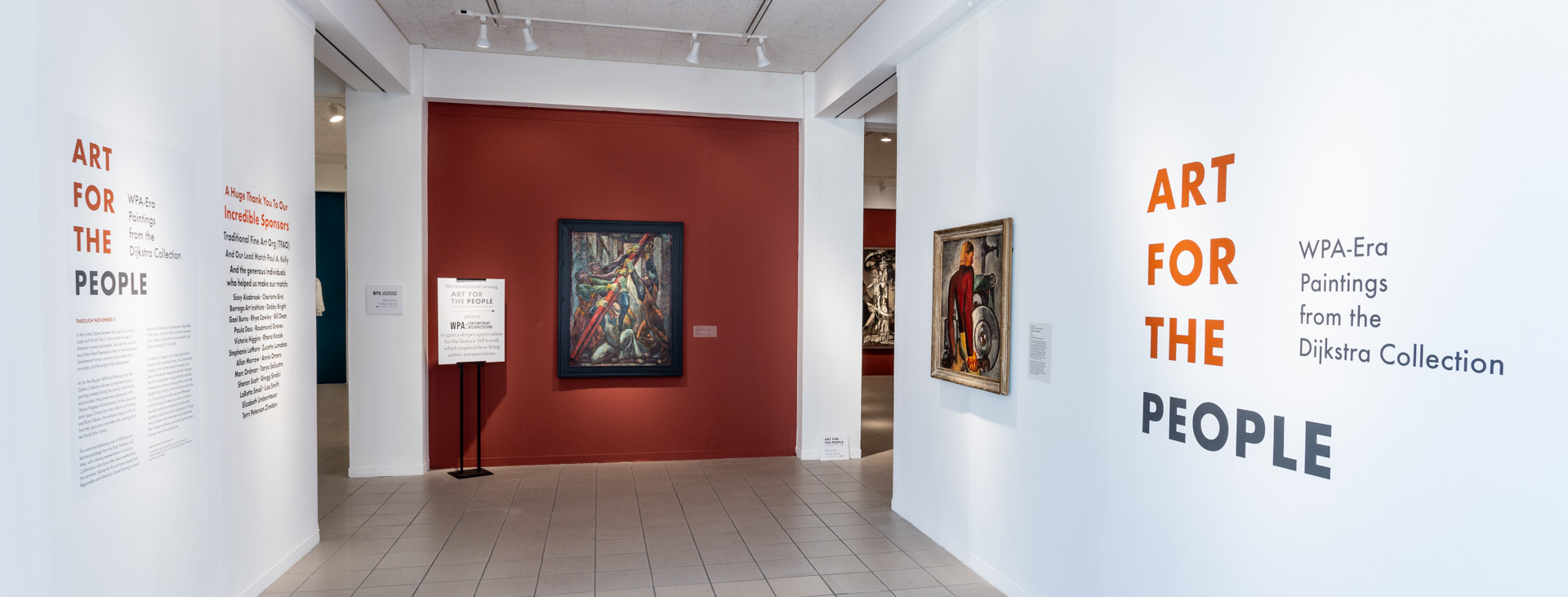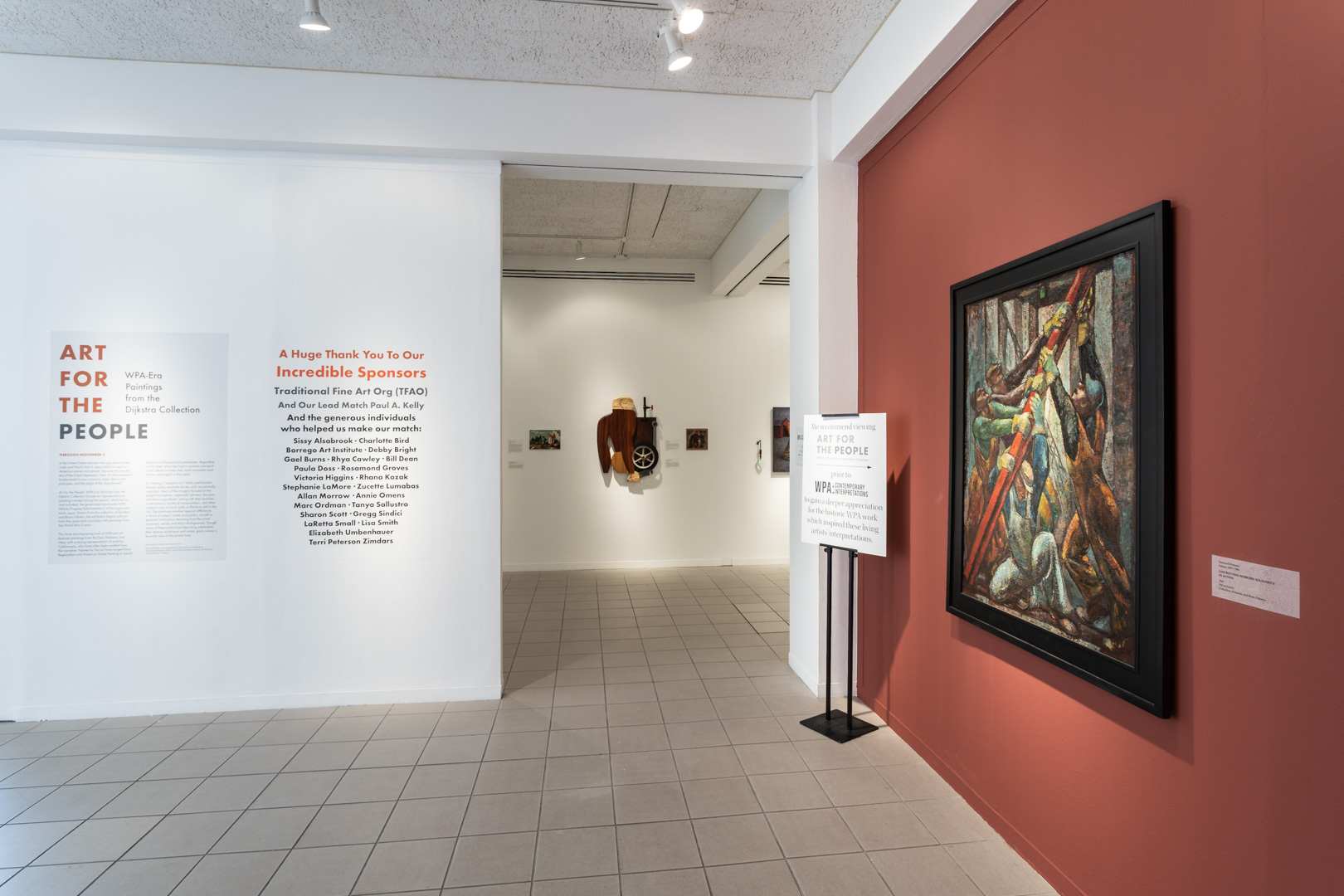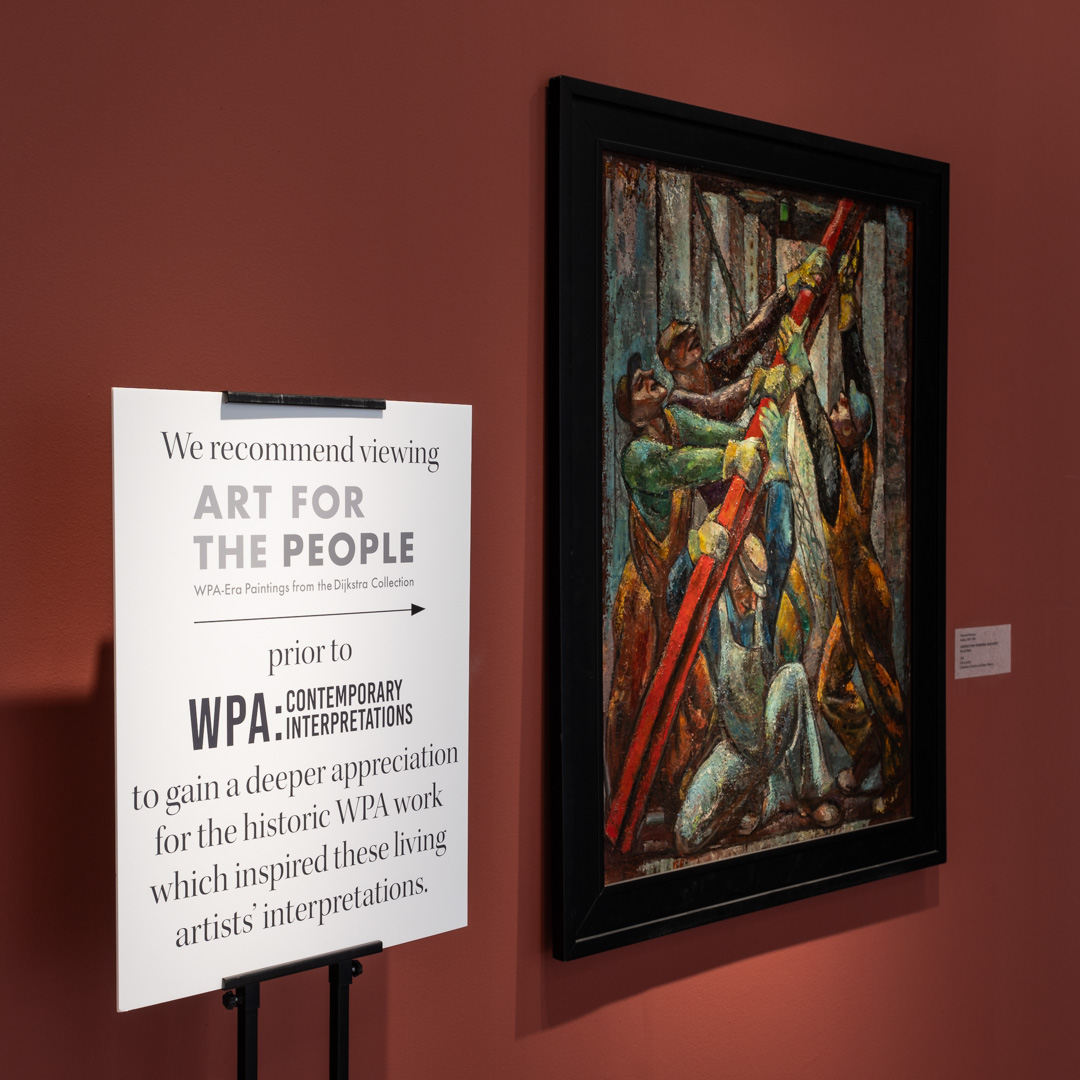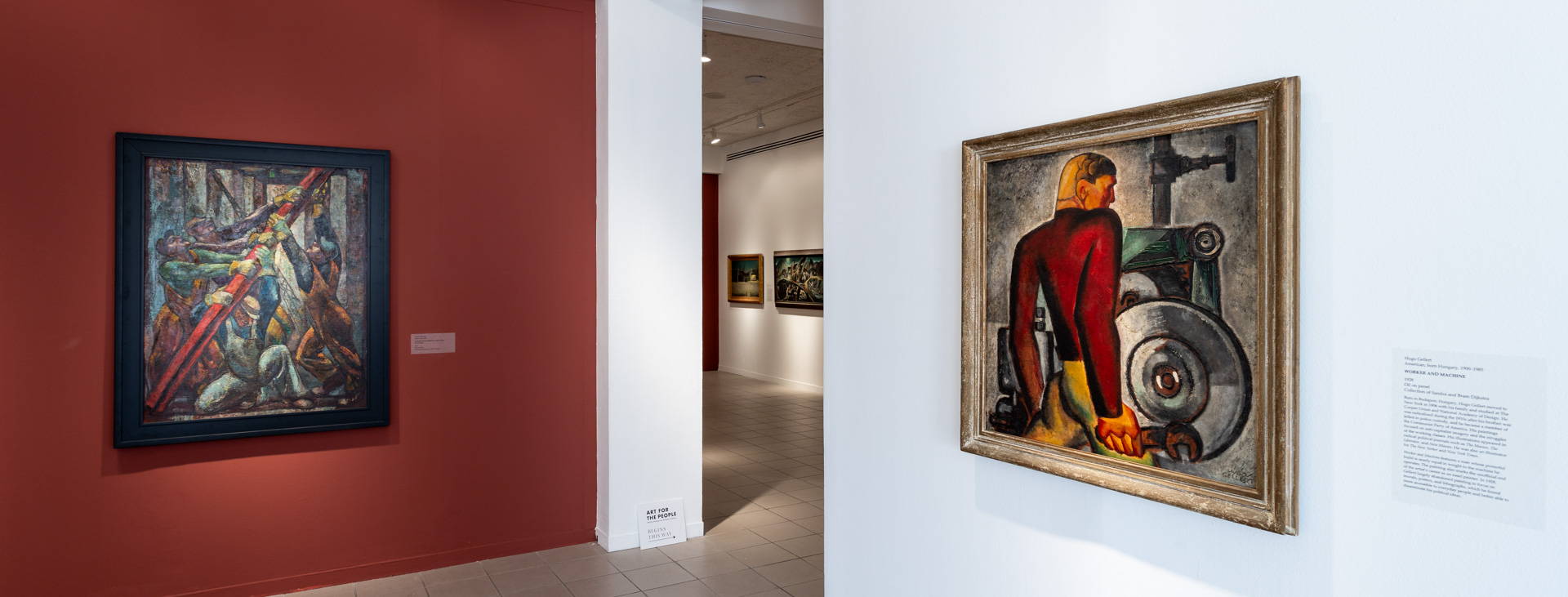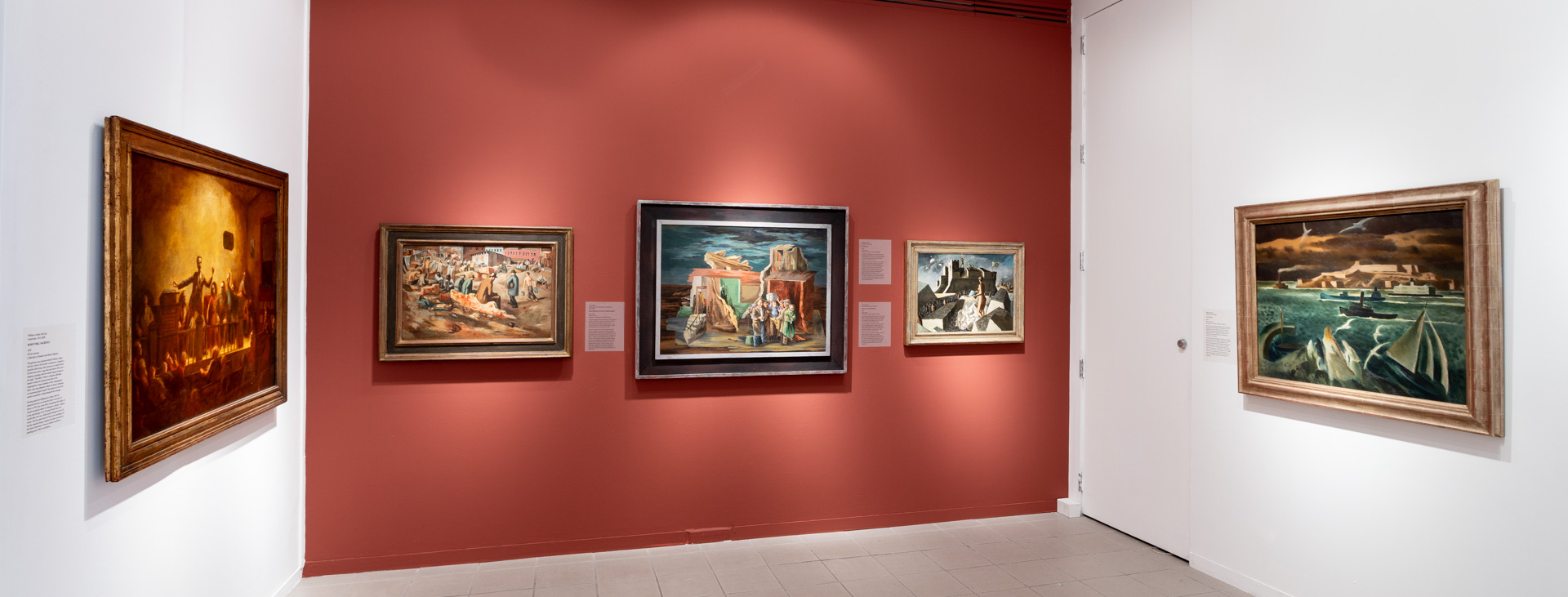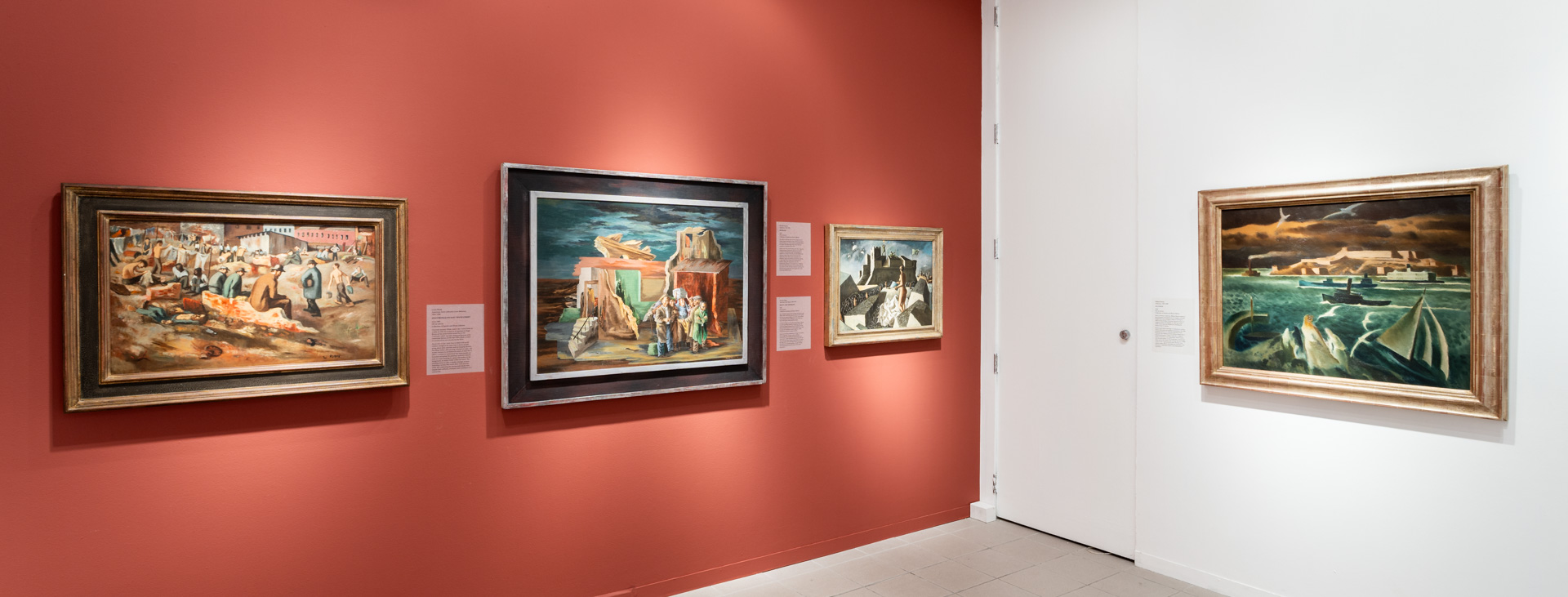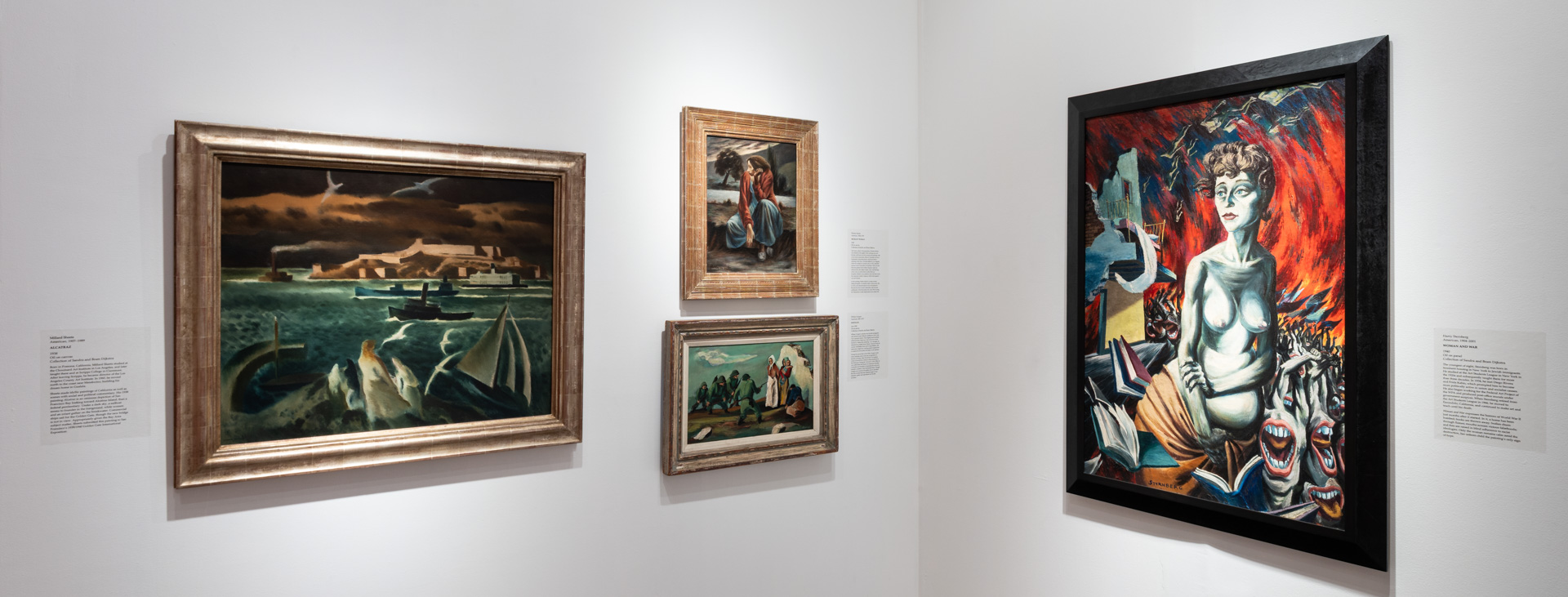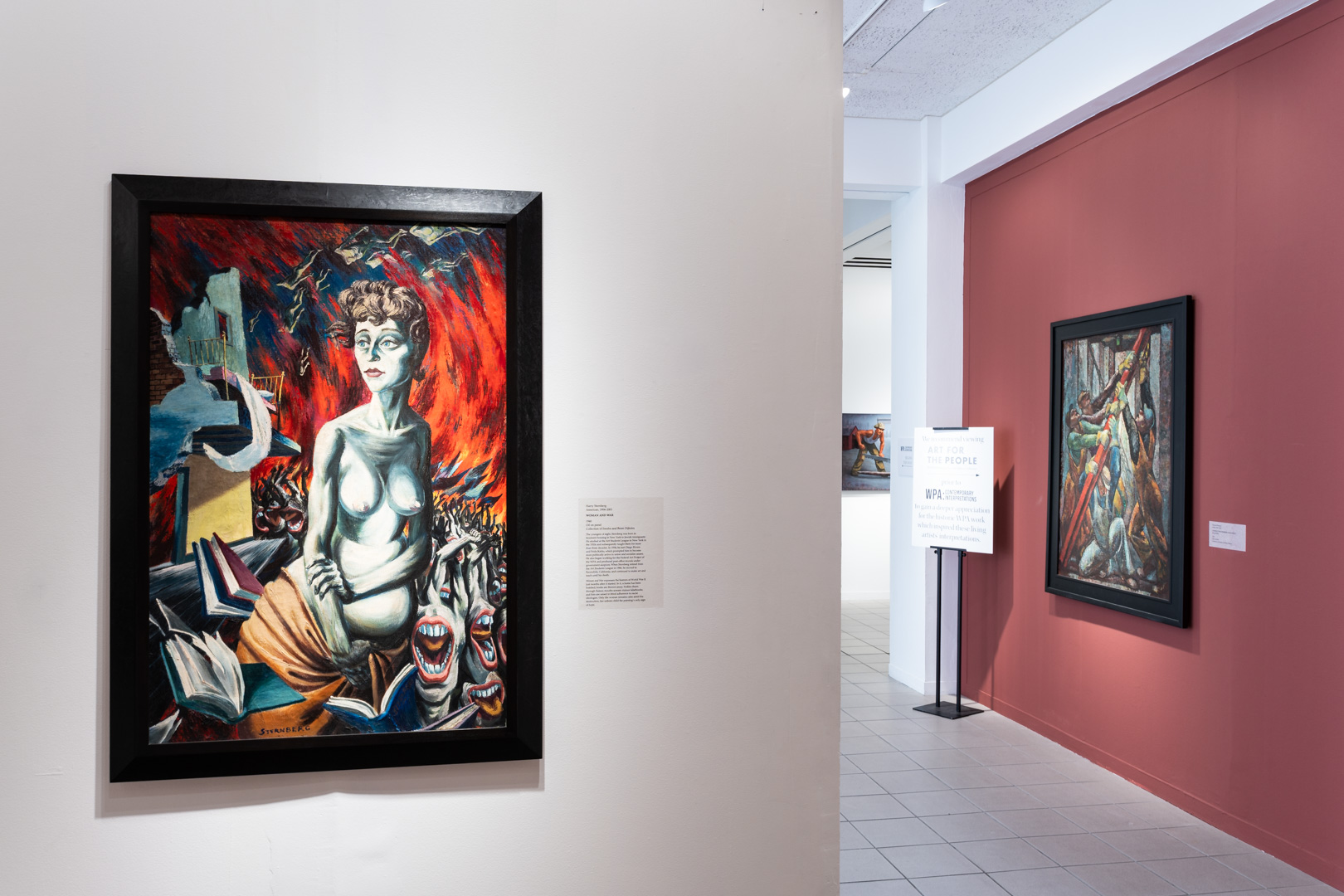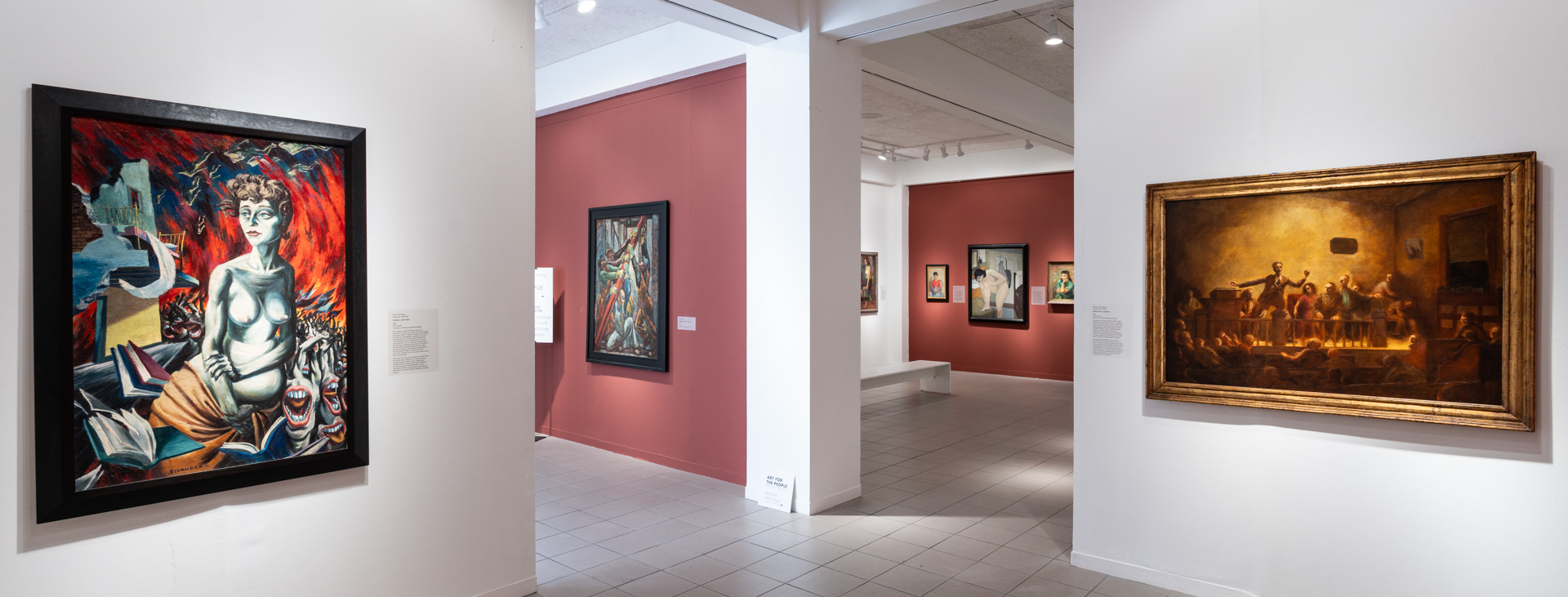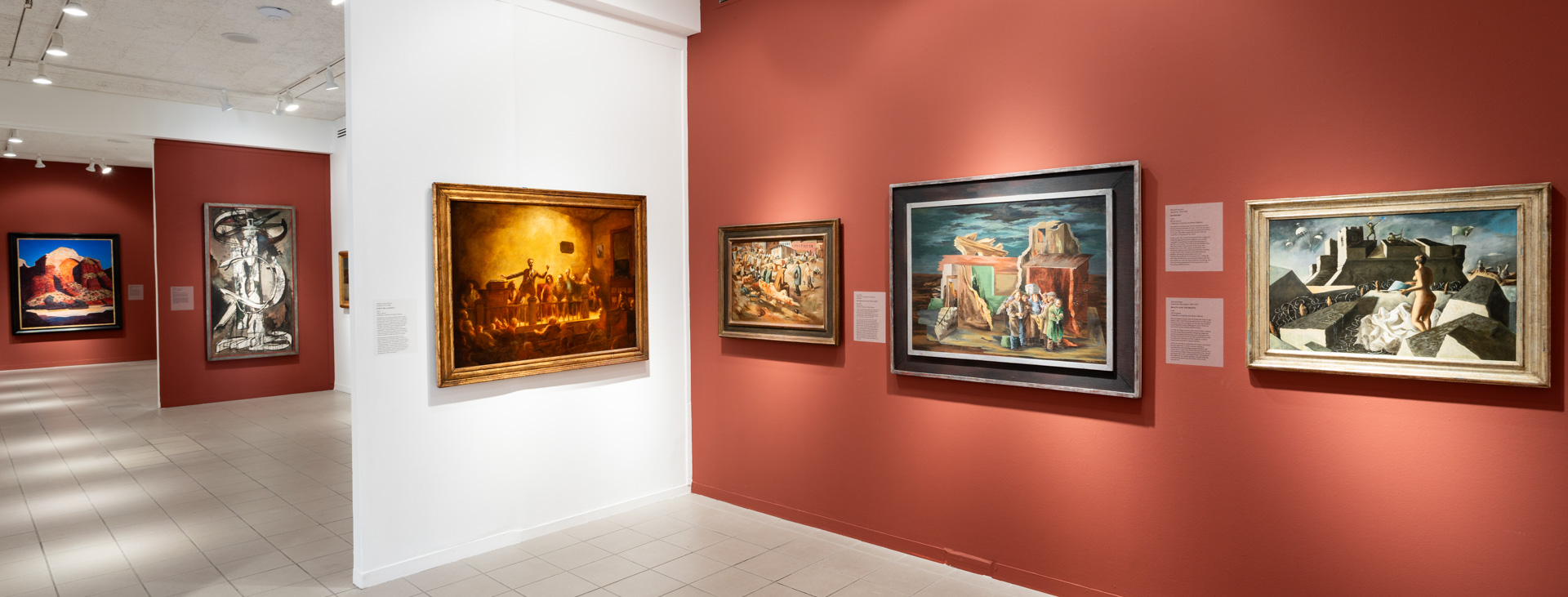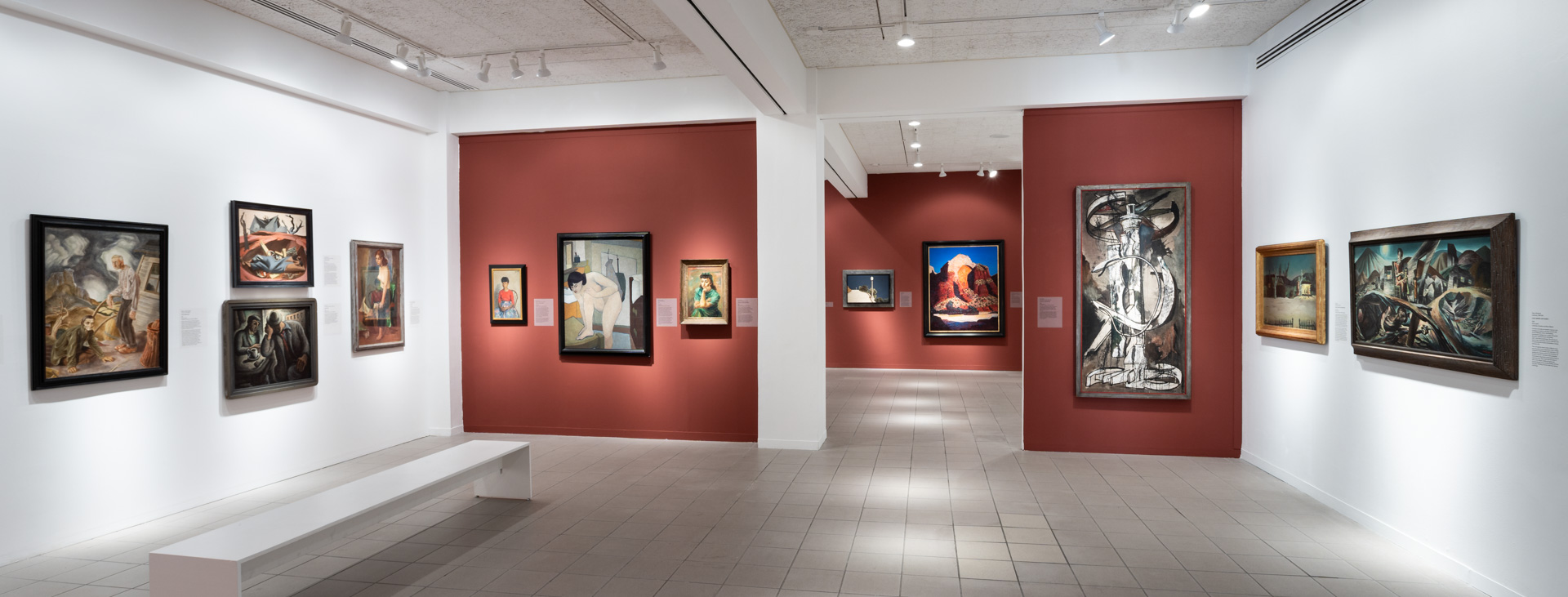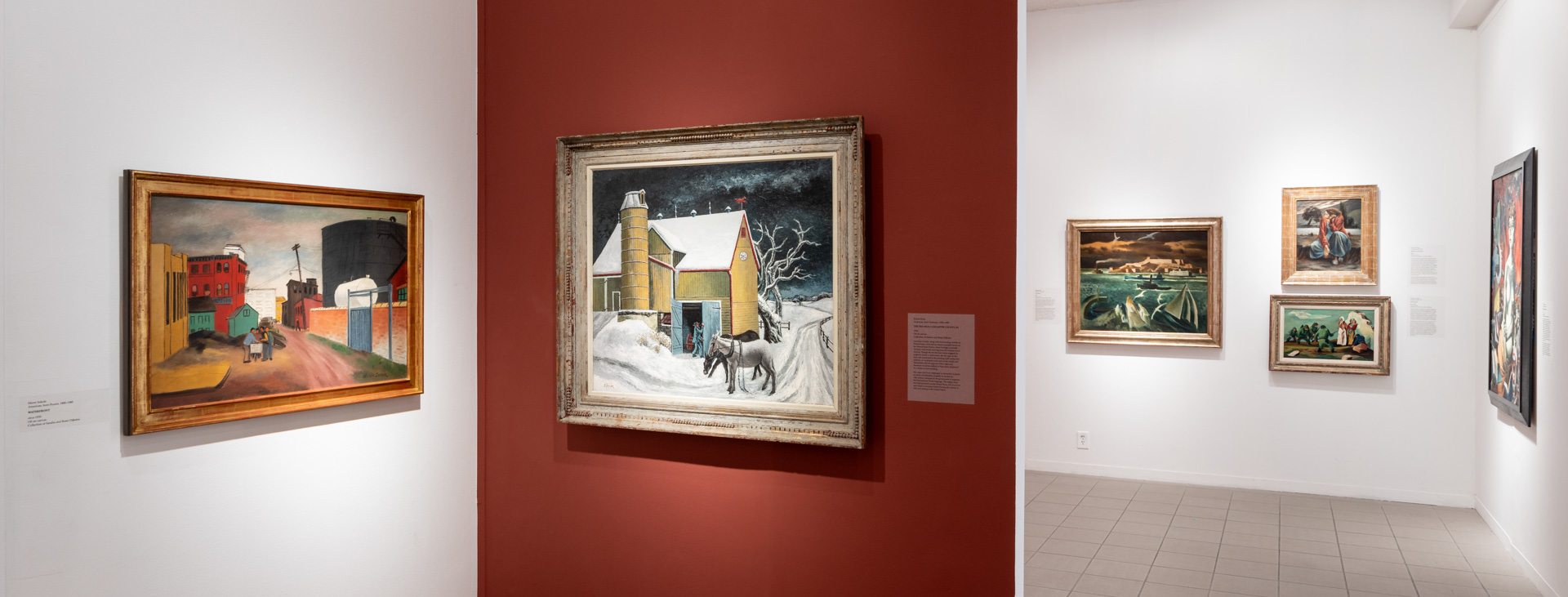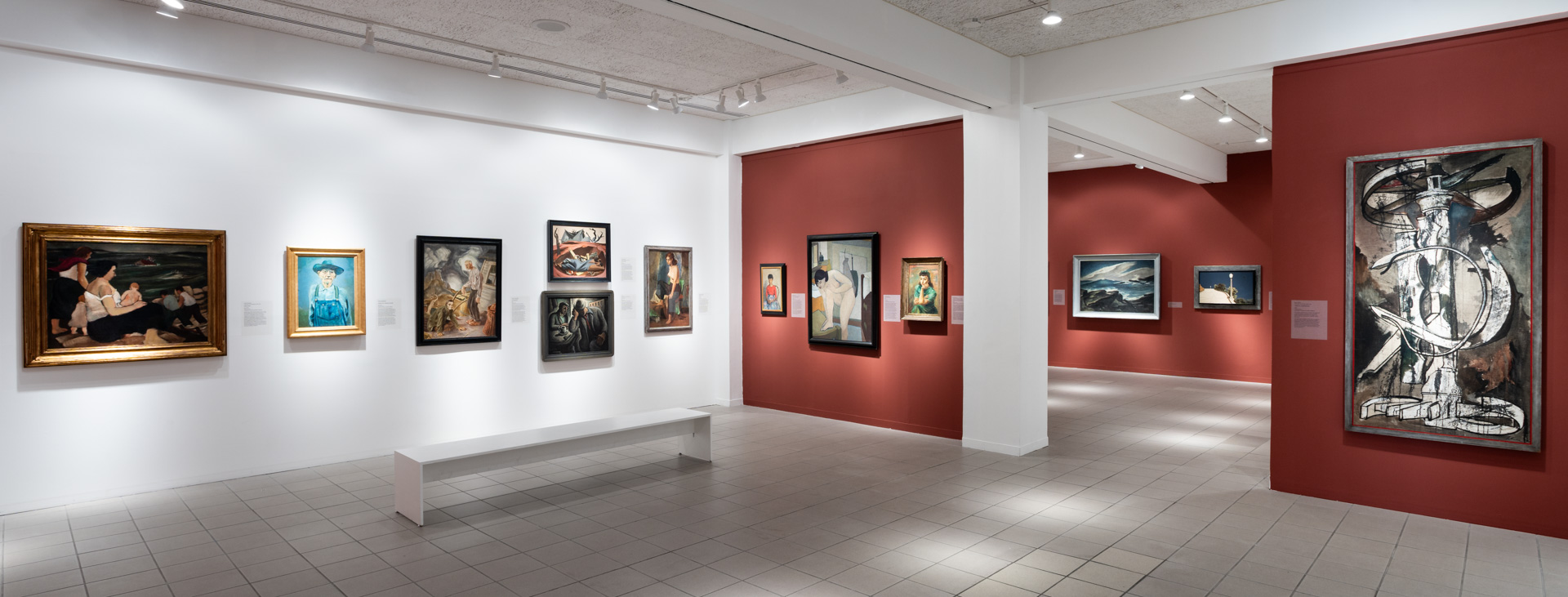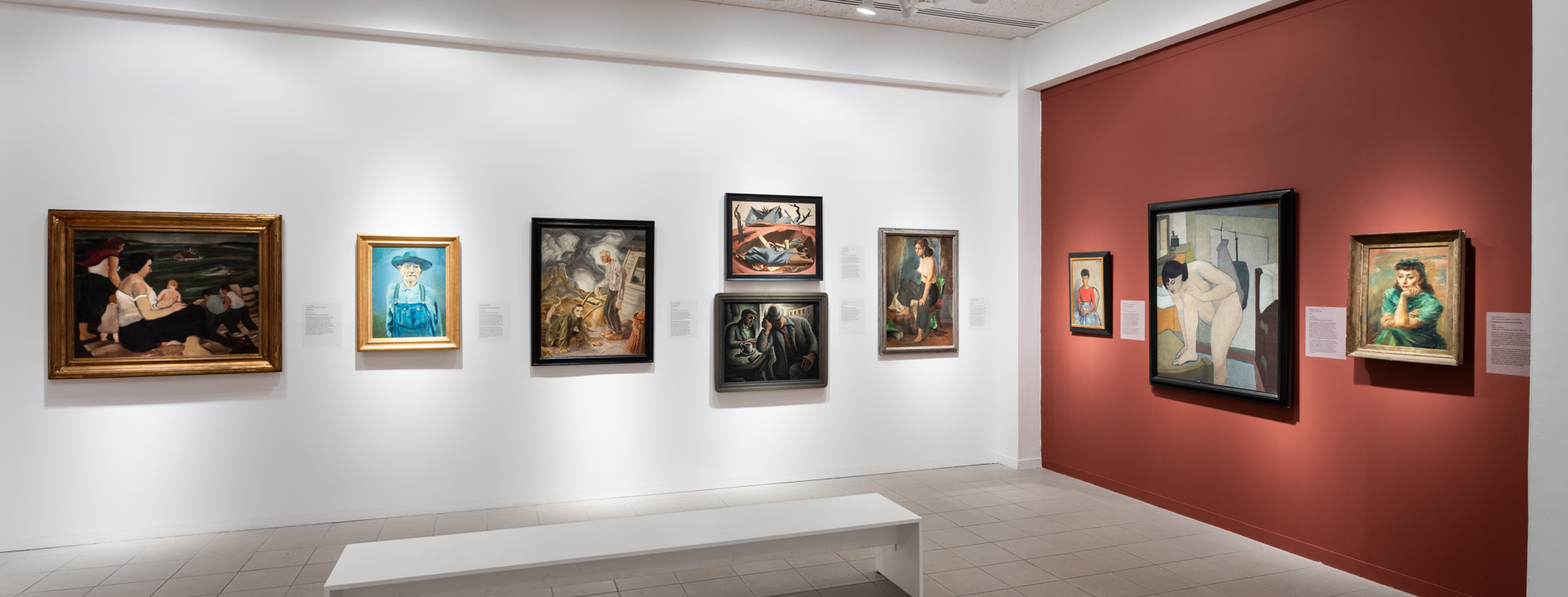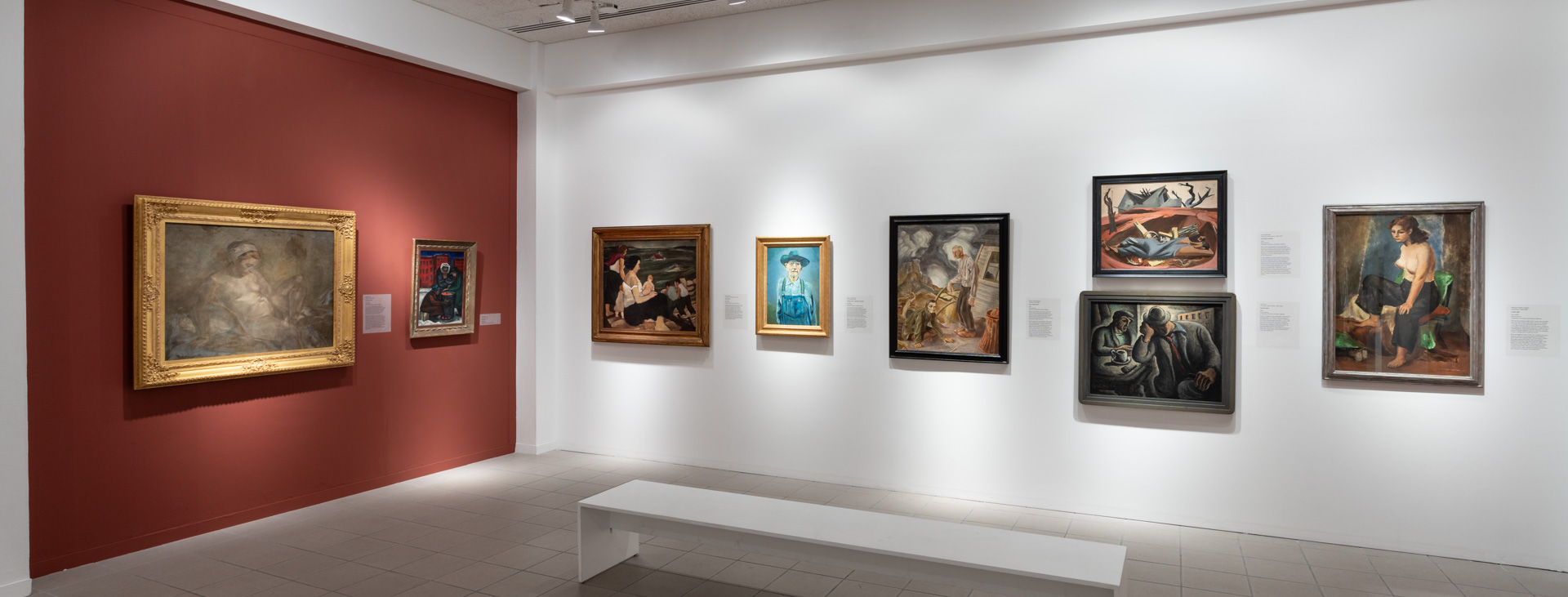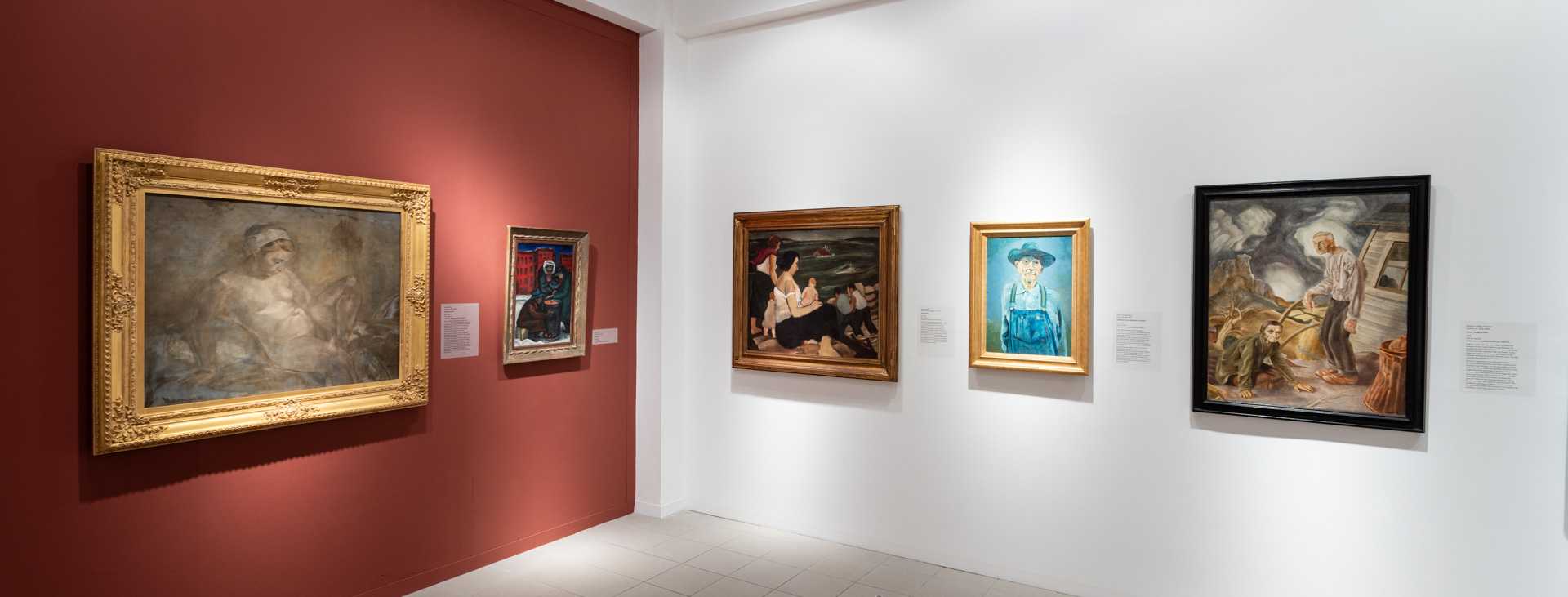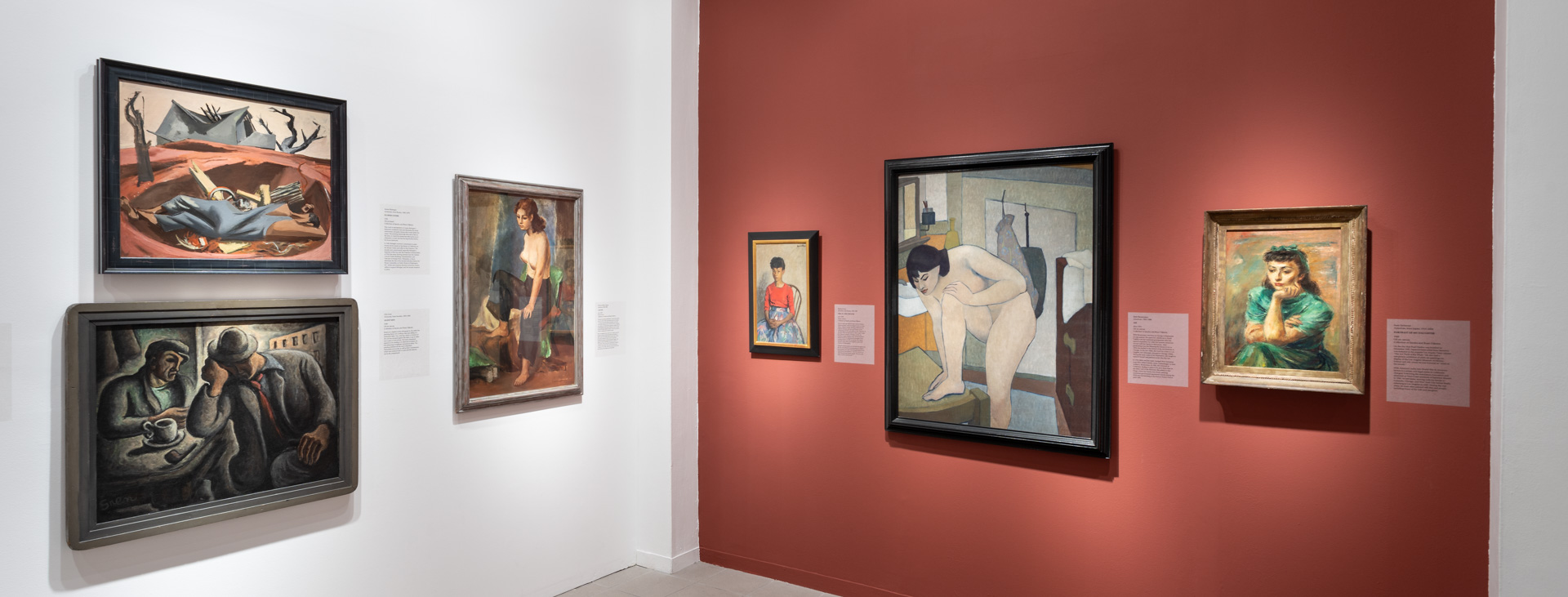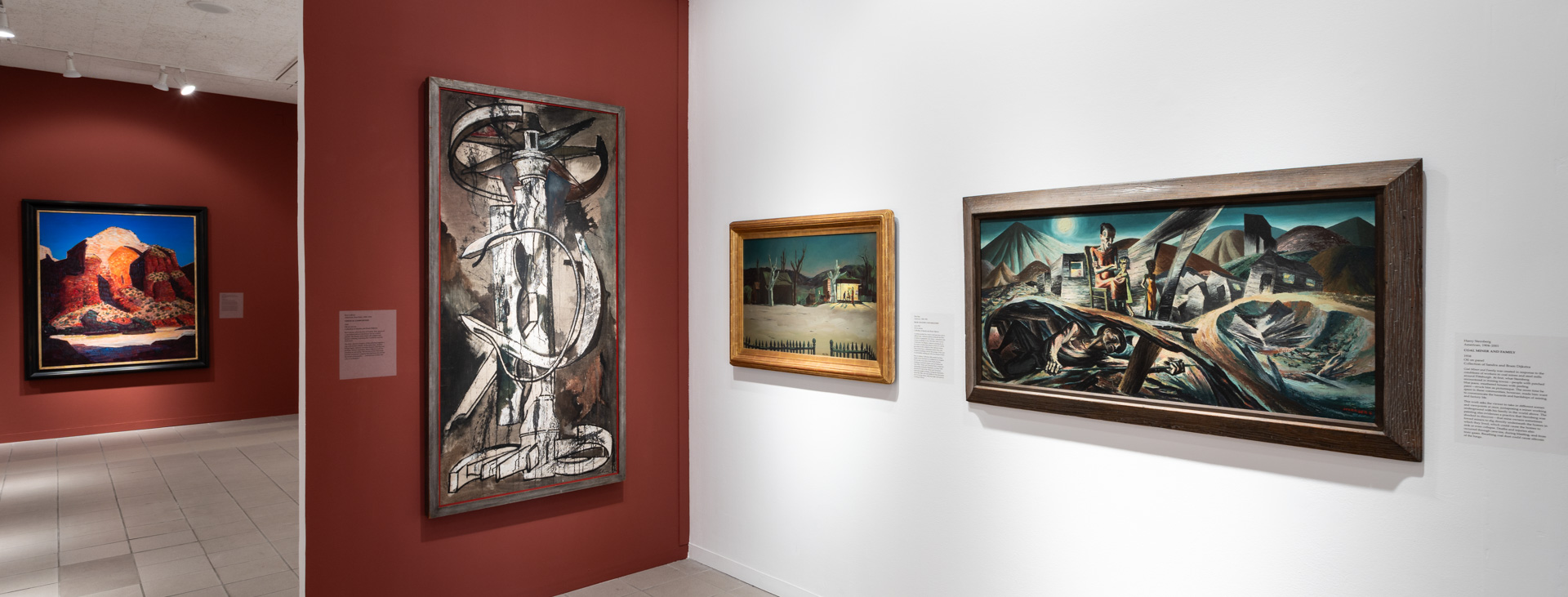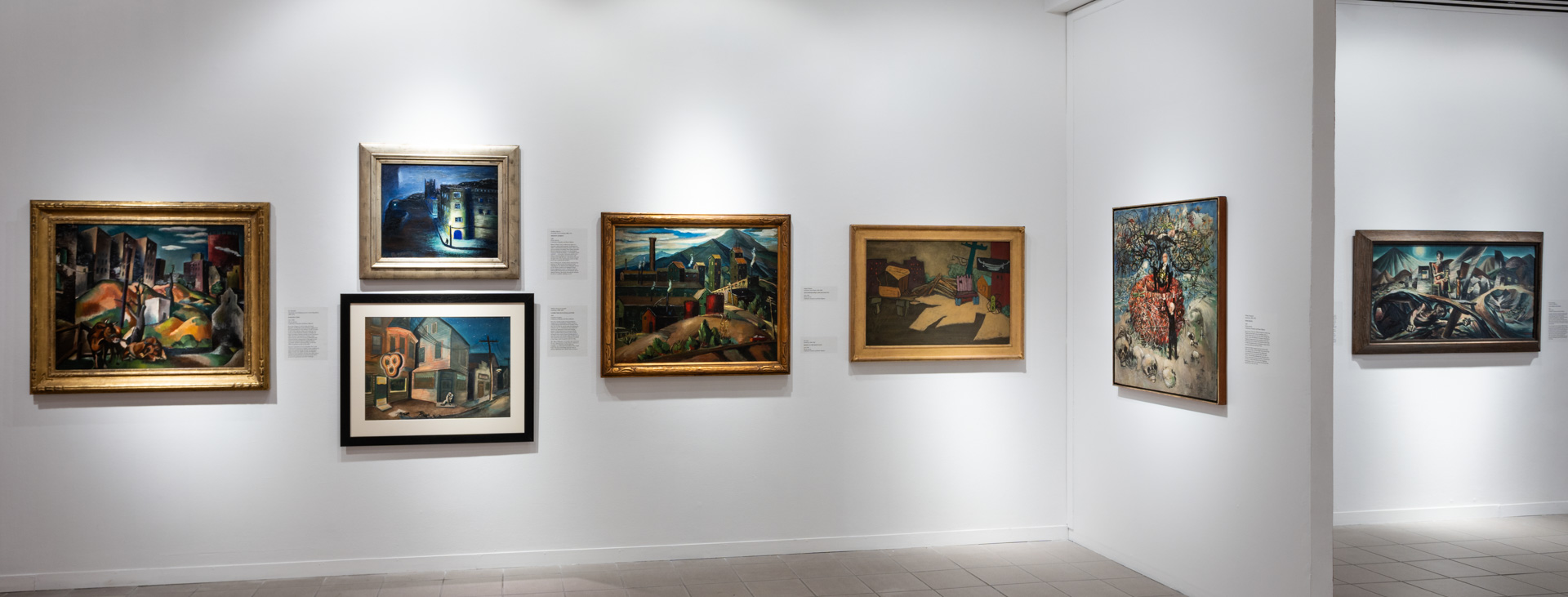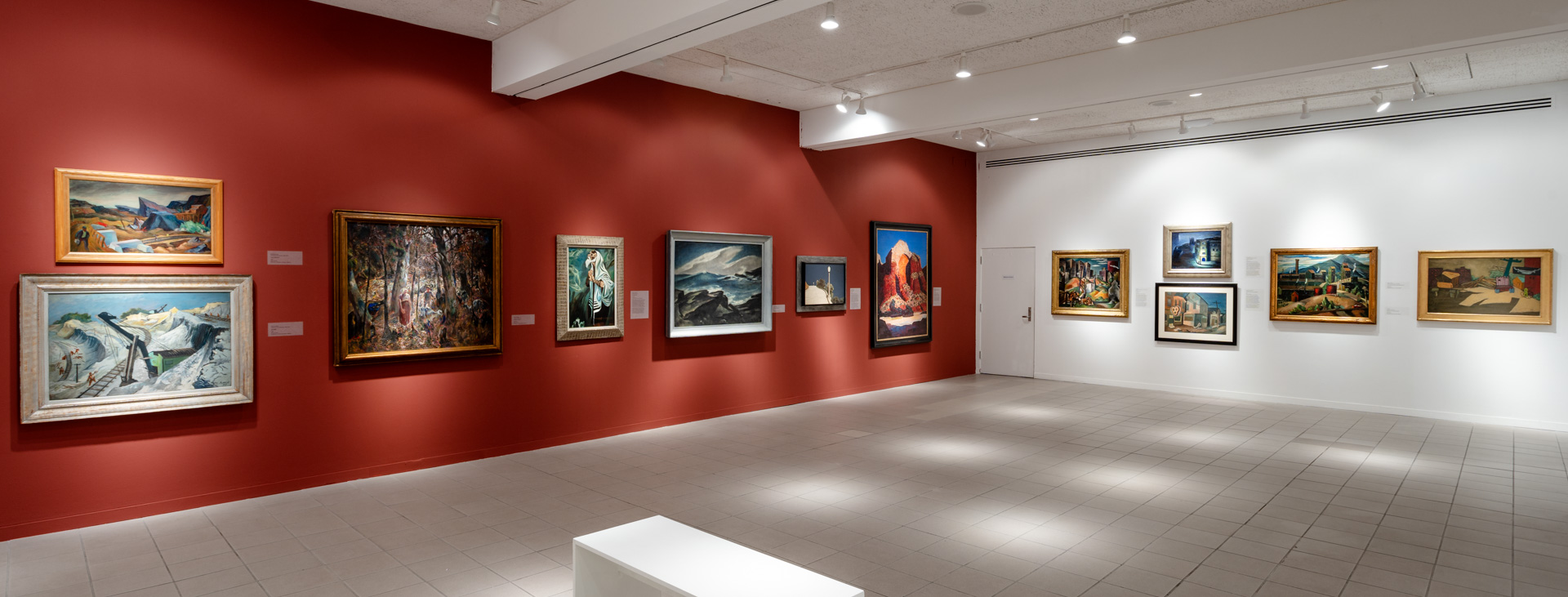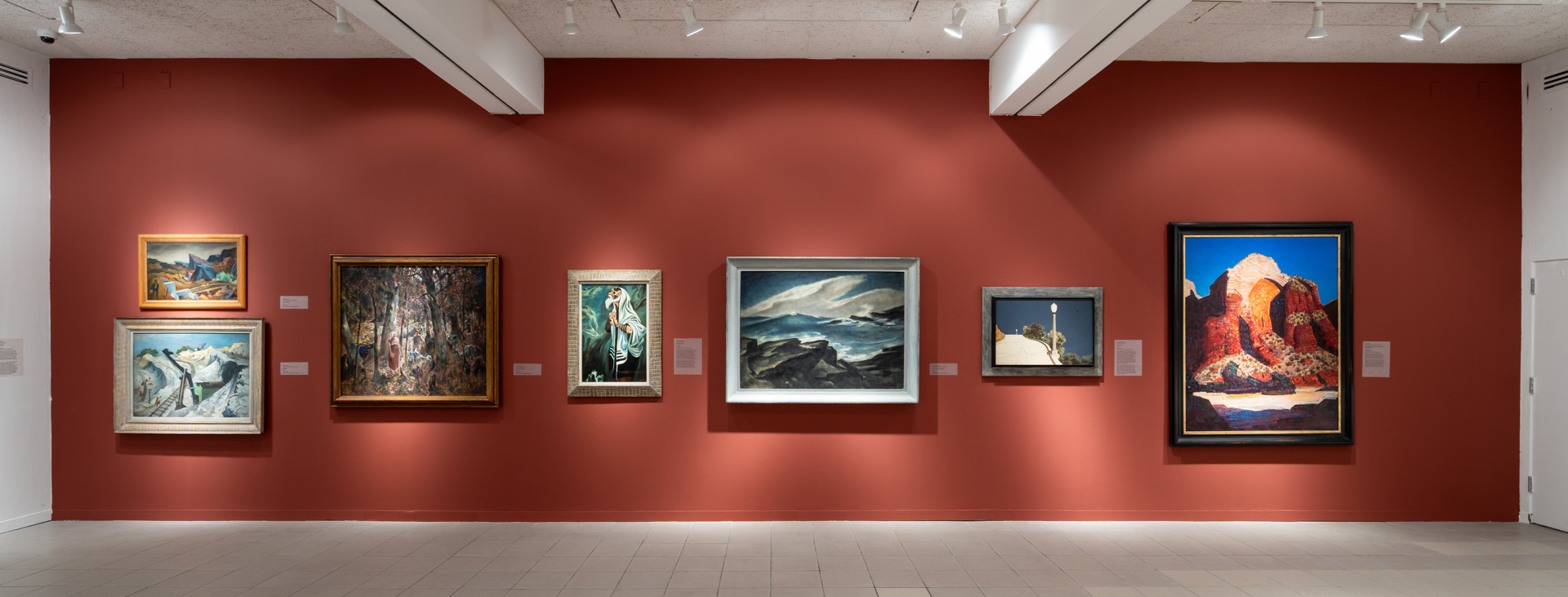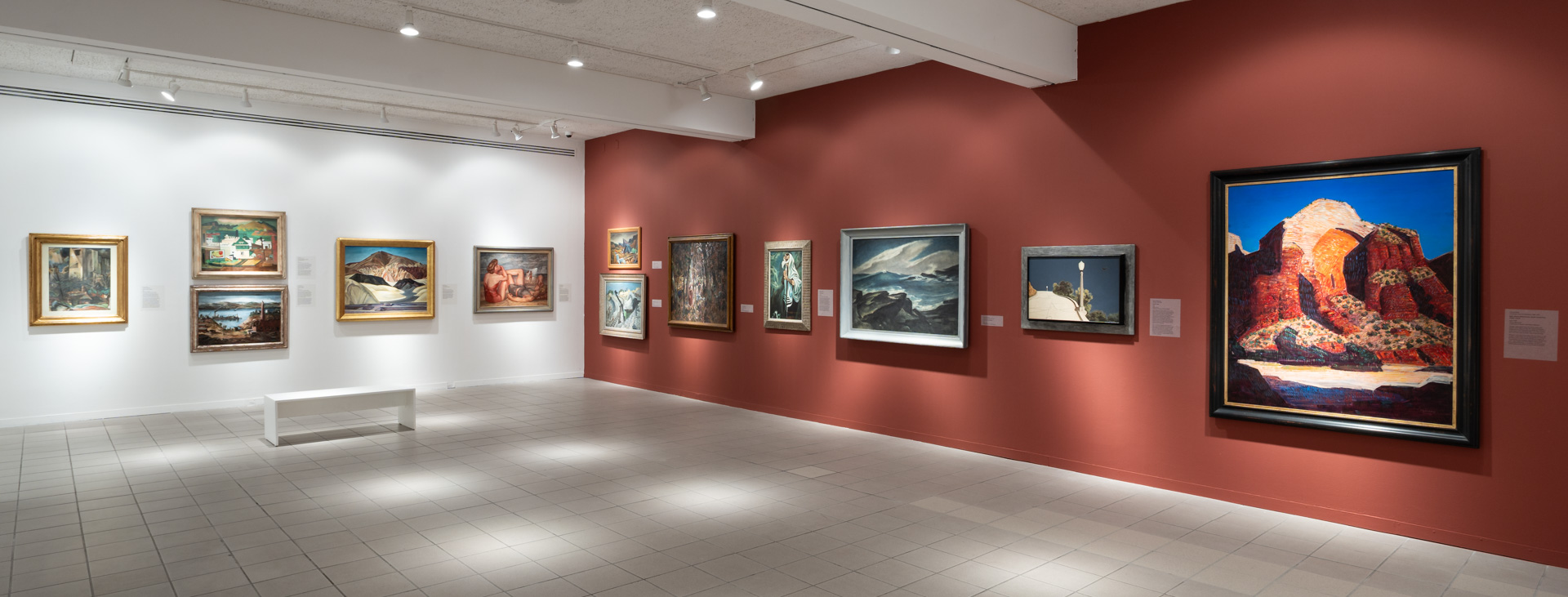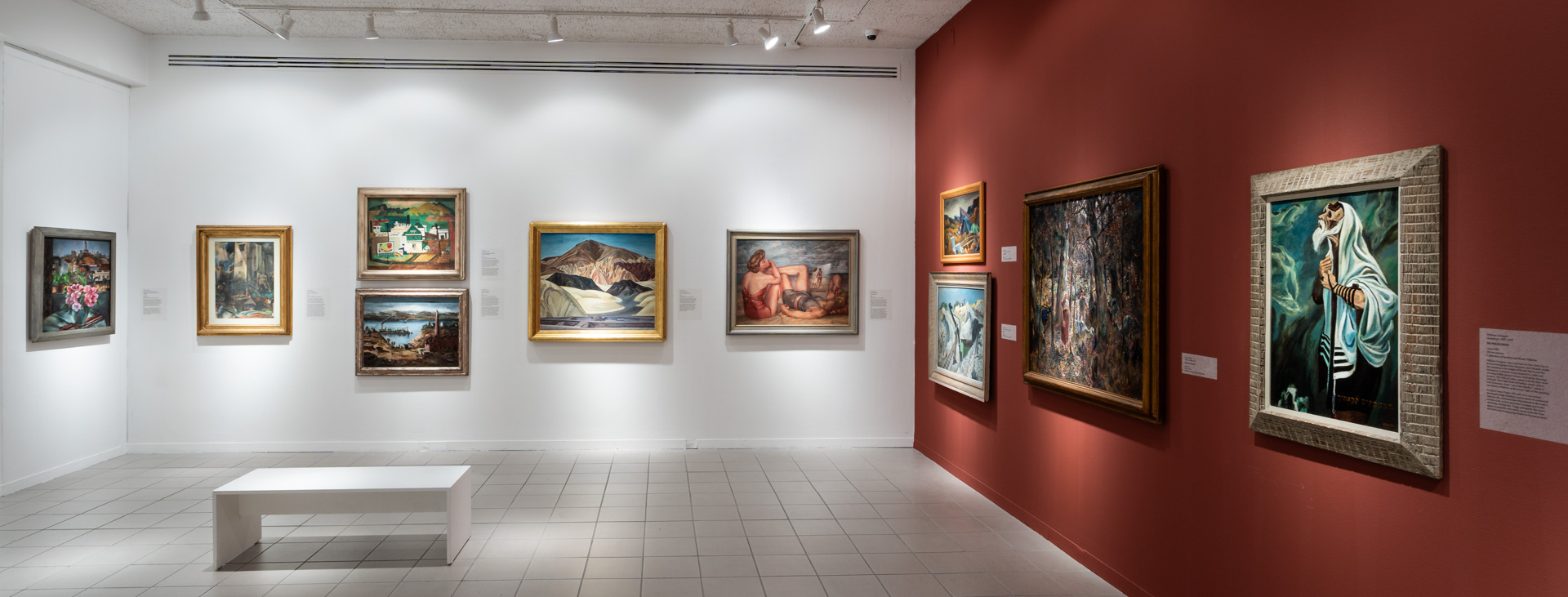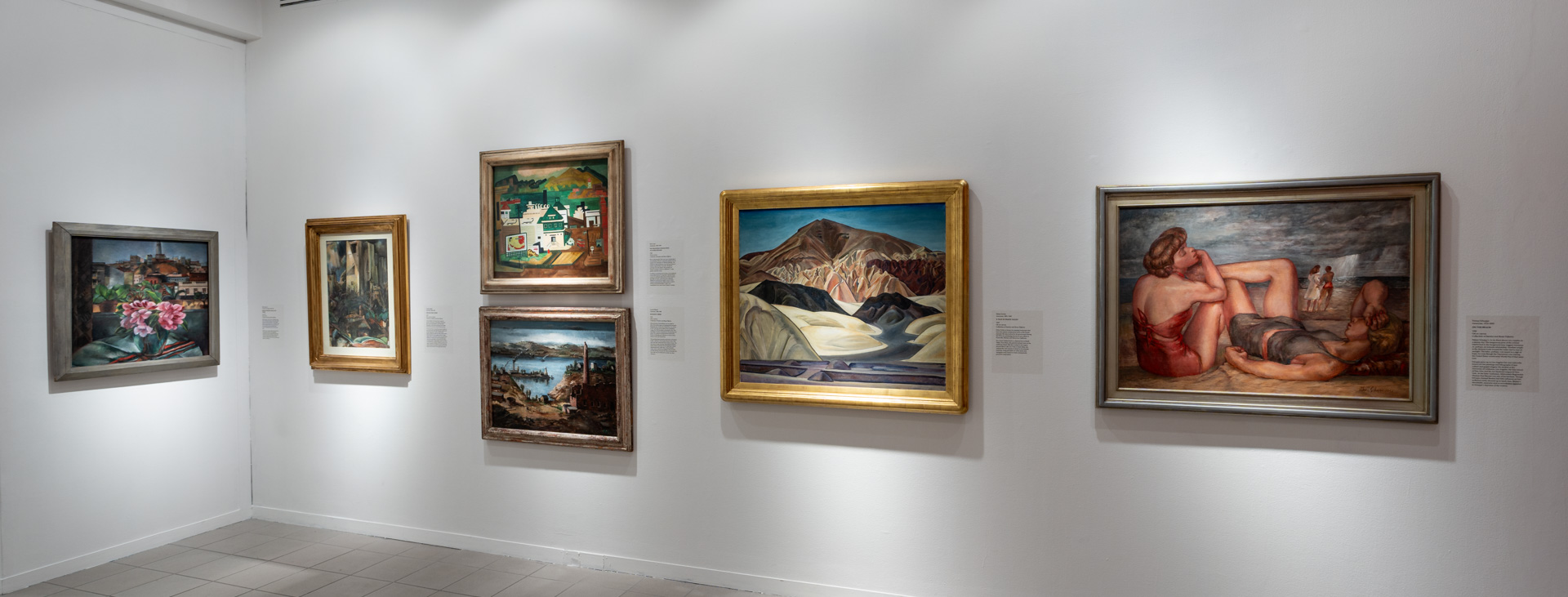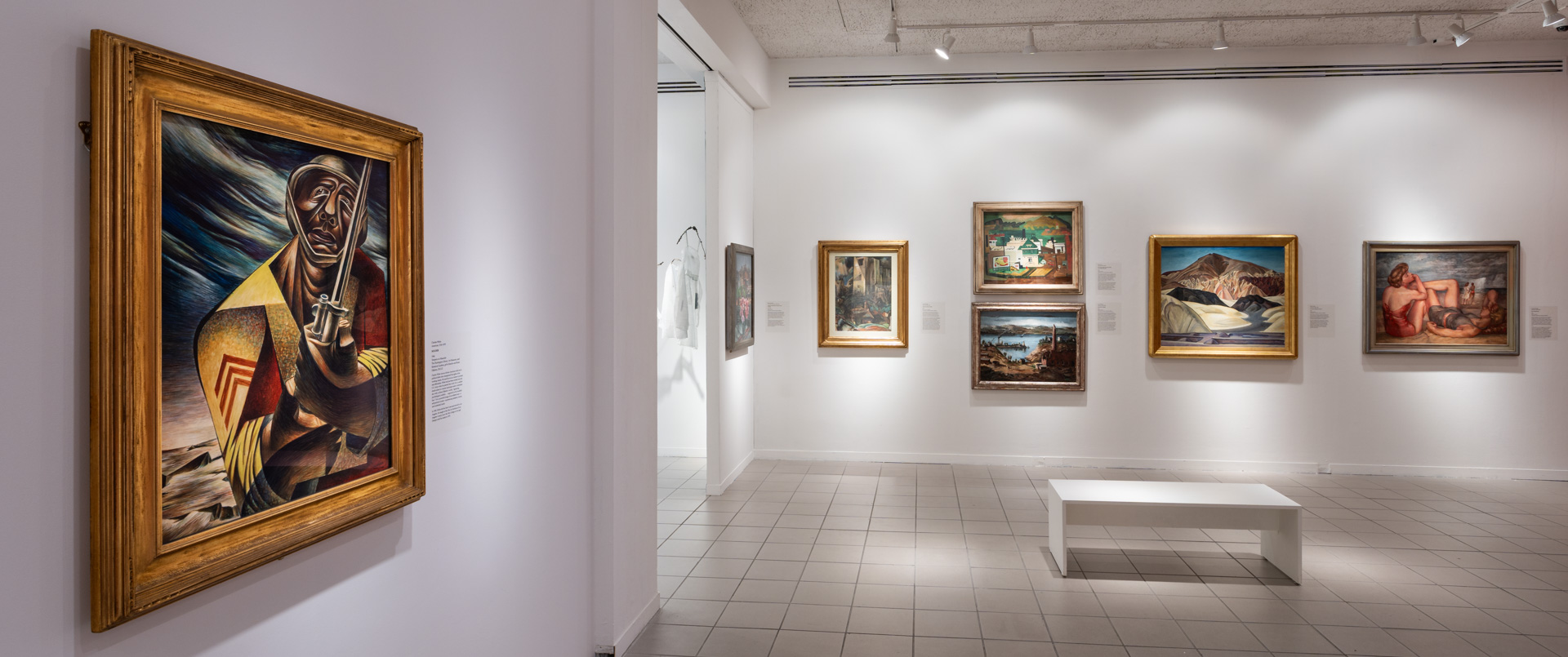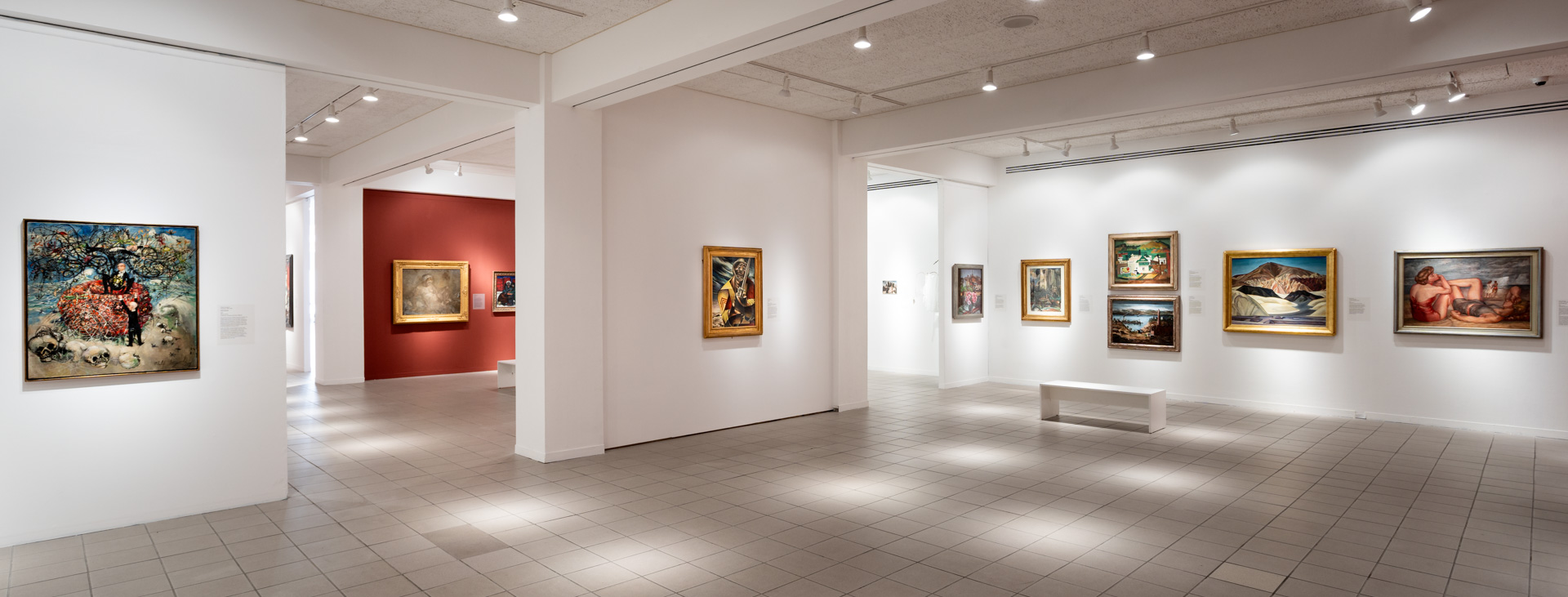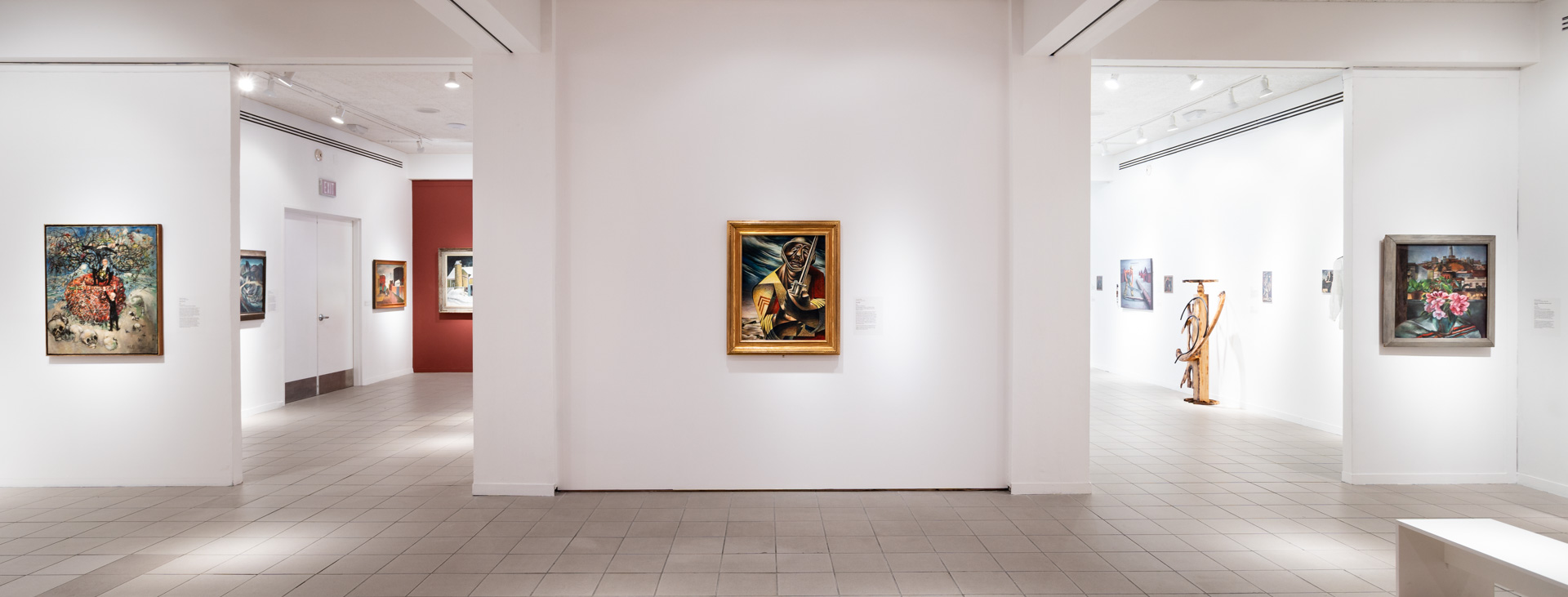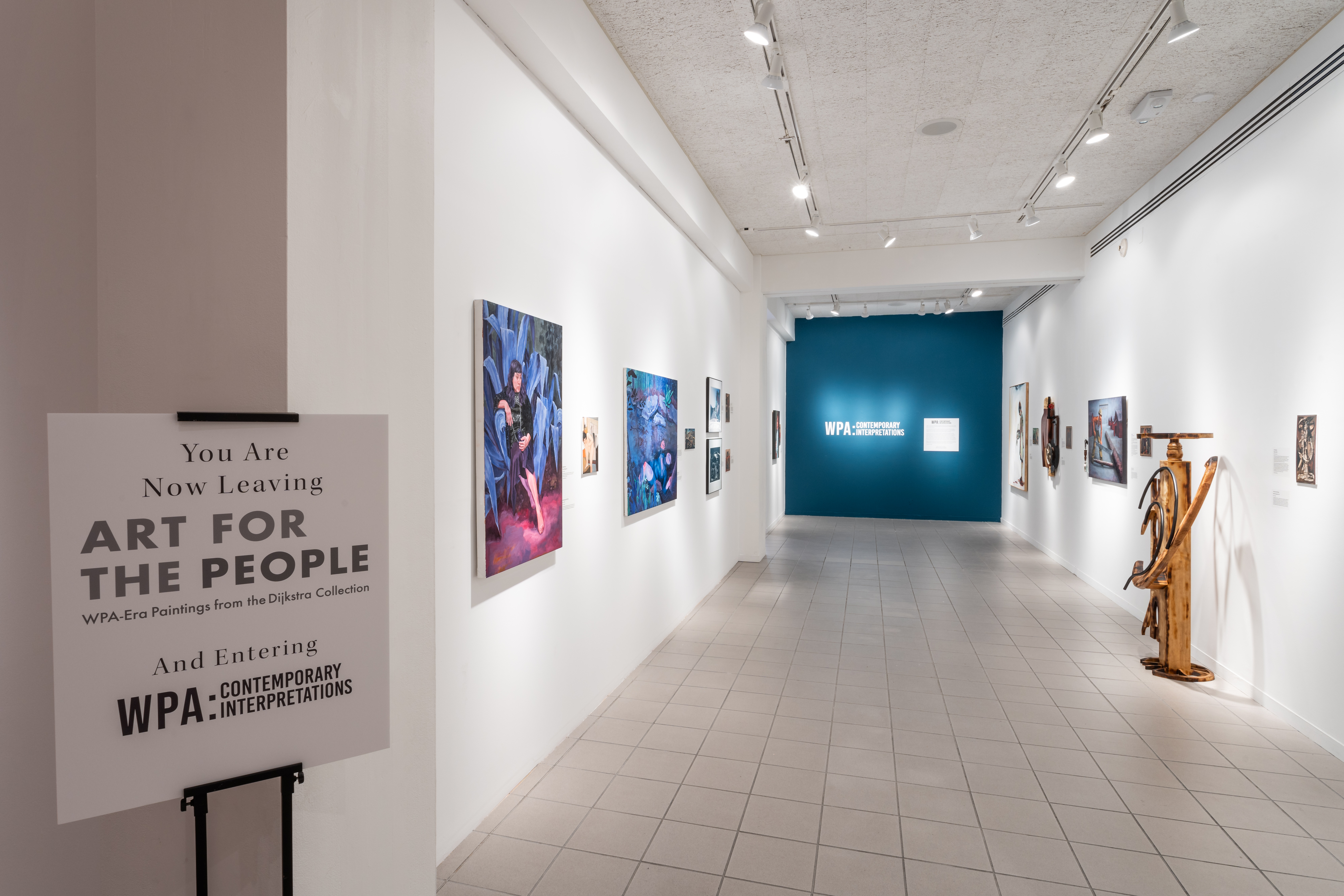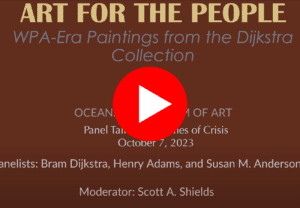
Art for the people: wpa-era paintings from the dijkstra collection
june 24–november 5, 2023
Drawn from the collection of San Diego collectors Sandra and Bram Dijkstra, this exhibition features a series of works created during the years between the American stock market crash of 1929 and World War II and offers an expansive view of work from often-overlooked artists with a diverse range of backgrounds, locales, and worldviews.
During this era, which led to and included the government sponsored WPA (Works Progress Administration) of the 1930s and 1940s, many American artists created scenes that represented the state of the country and sought to produce art that expressed fundamental human concerns and basic democratic principles. The scale of these state-run programs was unprecedented, and many artists produced works that explored the hardships of the era and the government's response. Given the relevance of these themes to the present day, this collection of artwork holds particular significance.
Known as "people's art," these works were created with the intention of being accessible and meaningful to the general public. They feature imagery related to the period, including depictions of laborers, the poor, and the disenfranchised going about their activities in both urban and rural environments. This encompassing look at WPA-era art features 45 paintings from the East, Midwest, and West, with a strong representation of work by Californians, who have often been omitted from the narrative. Some paintings capture simple pleasures or quiet moments of the Great Depression era, while the majority convey the struggles and hardships of the time.
Art for the People: WPA-Era Paintings from the Dijkstra Collection encourages viewers to see works from this time in a more expansive way and to celebrate artists from varied backgrounds and locales. The artwork offers a historical lens, celebrating the artists and their accomplishments.
This exhibition was previously shown at the Crocker Art Museum in Sacramento and will travel to The Huntington Library, Art Museum, and Botanical Gardens in San Marino after it closes at OMA.
Many thanks to the exhibition's Title Sponsor, Traditional Fine Arts Organization (TFAO).
EXHIBITION PHOTOGRAPHY
CATALOG INTRODUCTION
Human Concerns and Democratic Principles
By Scott A. Shields
American isolationist tendencies and attitudes remained strong in the wake of World War I, but the lingering influence of the 1913 Armory Show, the wartime presence of figures such as Marcel Duchamp and Francis Picabia, and Alfred Stieglitz’s magazine 291 all brought a new spirit of exploration and experimentation to younger American artists. This spirit would stretch into the 1920s, 1930s, and beyond, and would be further stoked by the powerful anti-capitalist, anti-war imagery of magazines such as The Masses and its subsequent incarnations. It was further giv en a sense of local urgency by writers such asVan Wyck Brooks and Stieglitz acolyte Waldo Frank, who encouraged these younger artists to explore their own, distinctly American perception of place, arguing, in the words of poet William Carlos Williams, that the local is, in essence, the only universal.
In the years between the American stock market crash of 1929 and World War II, artists focused on American scenes and people—and often the plight of the dispossessed. They portrayed the American experience through topicality, local customs, and, frequently, blistering attacks on the neglect of the “have-nots” by the “haves.” Because this was the era of the Great Depression, it was inevitable that artists’ paintings would focus on such themes and often be overtly political, although content varied greatly by region, by the artist’s economic and social background, and by the maker’s ethnicity.
In large part because of the Depression, artists nationwide sought to produce art that expressed fundamental human concerns and basic democratic principles. Art for the People: WPA-Era Paintings from the Dijkstra Collection—and the accompanying exhibition of the same name—focus on representational painting created during this era, which led to, and included, the government-sponsored WPA (Works Progress Administration) of the 1930s and early 1940s. It begins with examples of art from the 1920s, during which time the modernist visual language of protest became consolidated, and concludes with paintings from the war years, when that focus came to be subverted—and denigrated—by means of an equally politically motivated visual language that sought to privilege abstraction over recognizable content.
This encompassing look at WPA-era art features paintings from the East, West, and Midwest, which historically have been accorded a range of monikers that include Regionalism, Social Realism, American Expressionism, American Scene painting, Urban Regionalism, and others. Regardless of the label, what these works had in common was each artist’s desire to make their work accessible (and hence meaningful) to the general public. In creating a “people’s art,” artists used familiar themes, easily readable stories, and, occasionally, nostalgia. Much imagery of the period focused on the people themselves—especially laborers, the poor, the disenfranchised—along with their activities, their rural and urban environments, contemporary modes of transportation, and other subjects close at hand, both on the farm and in the city. The paintings also evidence regional differences in terms of subject matter and politics and therefore pre-sent a broader view of this pivotal time by featuring oft-overlooked creators with diverse worldviews and artistic goals.
EXHIBITION CELEBRATION
Celebrate with us on June 24, 2023
EXHIBITION SPONSORS
Title Sponsor
Traditional Fine Art Org (TFAO)
Lead Matching Gift
Paul A. Kelly
Additional Matching Gifts
Sissy Alsabrook
Charlotte Bird
Borrego Art Institute
Debby Bright
Gael Burns
Rhya Cawley
Bill Dean
Paula Doss
Rosamond Groves
Victoria Higgins
Rhana Kozak
Stephanie LaMore
Zucette Lumabas
Allan Morrow
Annie Omens
Marc Ordman
Tanya Sallustro
Sharon Scott
Gregg Sindici
LaRetta Small
Lisa Smith
Elizabeth Umbenhauer
Terri Peterson Zimdars




